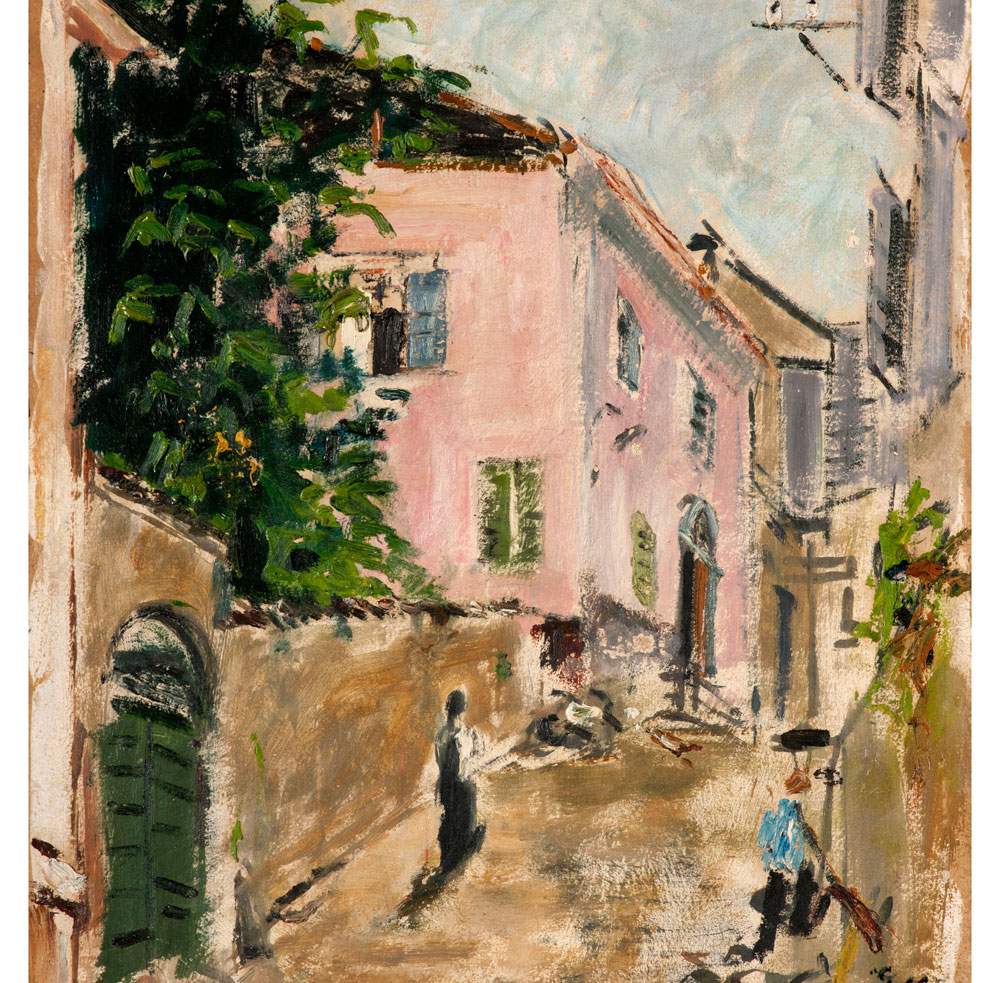From De Nittis to Fontana, in Lecco the great Italian masters narrate the landscape
In Lecco, until November 21, 2021 the exhibition Paesaggi Possibili. From De Nittis to Morlotti, Carrà to Fontana.
Curated by Simona Bartolena, produced and produced by ViDi - Visit Different, and in collaboration with the Municipality of Lecco and the Lecco Urban Museum System, the exhibition analyzes, through ninety works, how the theme of landscape has been interpreted by great Italian masters, such as Massimo d’Azeglio, il Piccio, Telemaco Signorini, Giovanni Fattori, Silvestro Lega, Gaetano Previati, Giacomo Balla, Carlo Carrà, Ennio Morlotti, Lucio Fontana and others.
The works on display dialogue with the heritage of the Lecco Urban Museum System: while the rooms of Palazzo delle Paure house some works owned by Lecco’s museums, the itinerary finds a natural continuation within the Modern Art Gallery of Villa Manzoni.
The theme of landscape has been repeatedly investigated by referring, above all, to the French scene, in which, from Romanticism to Barbizon, from the Impressionists to the Pointillists, to the Avant-gardes, the genesis of landscape in painting traces a linear path. The situation of this theme in Italy, where it has been widely disseminated and where it has been equally a protagonist of the rapid evolution that has led art toward contemporaneity, is less well known.
The exhibition covers a time span from the Romantic era to the post-World War II period, highlighting the different approaches to landscape, namely as mimesis of the real, as a place of imagination and dream, as a symbol, as a projection of the self, as a spatial concept, revealing the progressive tendency toward abstraction that led it to the threshold of the Informal and beyond.
It is a tale that winds from the classicism of the Romantics’ paysage historique to the Macchiaioli’s investigation of the real, to the Divisionist visions and the experiments of the early 20th century Avant-gardes, to the threshold of the contemporary, when, with artists such as Morlotti and Fontana, landscape is translated into emotional instinct or spatial concept. “Although landscape is a widespread iconographic theme in the visual arts today,” said the curatrive, "its autonomy as an autonomous pictorial genre is very recent. It was not until the 19th century, in fact, that it was given an autonomous role: no longer paysage historique, no longer a setting for mythological, religious or historical tales, but a theme in its own right, a moment of observation of reality from life, an occasion for technical experimentation and poetic expression. From the sublime nature of the Romantic generation to the glimpses from life of the Barbizon painters and their many heirs, the nineteenth century is, throughout Europe, the century in which landscape finds itself, gradually transforming itself from a setting for biblical historical or literary narratives to a place of truth, a place of the soul, a collective space to a mental space."
For info: www.vidicultural.com
Hours:
Palazzo delle Paure Tuesday from 10 a.m. to 1 p.m.; Wednesday and Thursday from 2 to 6 p.m.; Friday, Saturday and Sunday from 10 a.m. to 6 p.m. Closed Mondays.
Villa Manzoni Tuesday from 2 to 6 p.m.; Wednesday and Thursday from 10 a.m. to 1 p.m.; Friday, Saturday and Sunday from 10 a.m. to 6 p.m. Closed Mondays.
Tickets: Full 10 euros, reduced 8 euros for children 14 to 18, over 65, preconstituted groups of adults over 15, Trenord season ticket holders on weekends. Children and schools 5 euros.
Image: Filippo de Pisis, Landscape (1928; oil on cardboard, 48.5 x 38 cm; private collection) Credit Filippo de Pisis, SIAE 2021.
 |
| From De Nittis to Fontana, in Lecco the great Italian masters narrate the landscape |
Warning: the translation into English of the original Italian article was created using automatic tools. We undertake to review all articles, but we do not guarantee the total absence of inaccuracies in the translation due to the program. You can find the original by clicking on the ITA button. If you find any mistake,please contact us.




























